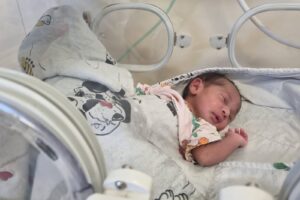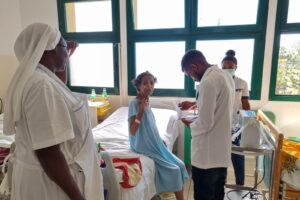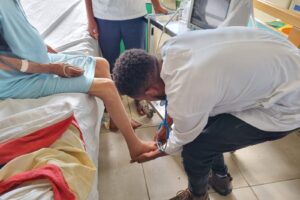30 Jan Updates from Tigray – January 2023
There are glimmers of hope in these first weeks of the new year for people in Tigray. The road back to a decent life, however, is still long and with many obstacles.
– The first commercial flights (i.e., for passengers not aid workers) have finally reopened at Mekelle and Shirè airports. The photos published in the newspapers are touching: people returning home or to relatives after 2 years of blockade and kissing the ground… There are, however, still blockades coming out of the region: it seems that-excluding children and the elderly-Tigrinans can only get on a flight for health reasons…
– Finally, power distribution, telecommunications and some operations of banks have been reactivated. However, there remains the problem of the many state employees who have not received salaries for years. In addition, after such a long blackout, unfortunately, those who suceed in having contacts receive some ominous news: so many relatives who have died over the past two years…
– Deliveries of humanitarian aid have finally been unblocked, although the availability of fuel is still very scarse. We can confirm that grains, legumes, edible oil have also arrived in Adwa, distributed among the population and the mission’s internal canteen and hospital. The Red Cross and Doctors Without Borders have delivered some medicines and medical devices, although not all the needs are covered. UNICEF is providing therapeutic food for malnutrition. Powder milk is being supplied to face the death and malnutrition of the many mothers.
– Finally we can divulge the first photos and data arrived from Kidane Mehret Hospital in Adwa!!!
Here, for example, are some infants in need of neonatal intensive care due to malnutrition during gestation. Now that electricity is guaranteed, we can keep the incubators running and increase their hopes for life!
The total unavailability of medications for the elderly and people with chronic diseases has exacerbated and aggravated many situations and caused many preventable deaths.
Now care can resume for these patients who arrive exhausted at the hospital as well:
But what is the current situation?
- the Tigrinya army has kept its disarmament pledge, with heavy weapons being surrendered to the federal army. Some Eritrean troops have also withdrawn, leaving a trail of raids and violence, but their dangerous presence persists in some areas, including in Adwa; as do ethnic Amhara militias, particularly in disputed border areas;
- only 9% of health facilities in Tigray are functioning. The Ethiopian Ministry of Health has estimated that $1.4 billion will be needed for reconstruction (source: statement by Minister Lia Tadese on africarivista.it)
- acute malnutrition challenges a large segment of the population in Tigray and surrounding areas. It particularly affects pregnant women and children. Estimates are that more than 70 percent of mothers are undernourished, consequently giving birth to underweight infants with little chance of survival, and are too debilitated to breastfeed. To date it is still not possible to import powder milk in Tigray, very complex import permissions are required and difficult to obtain.
- 5.4 million people need humanitarian assistance (UN data – OCHA). Some peripheral areas still not reached, especially areas still held by Amhara and Eritrean military groups
- access to fuel is still limited, with long lines to access reduced supplies, while many roads the connect to other regions are still closed or disrupted.
Insights:
– “Foreing policy” article translated on Davide Tommasin’s website “Ethiopia, Tigrayans need a path home after Abiy war”
– article in Fides “The slow peace process in Tigray: still violence and too many restrictions on humanitarian aid”
– Africa Magazine updates on Ethiopia









